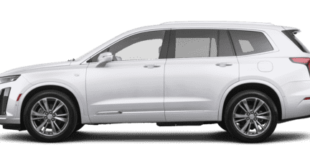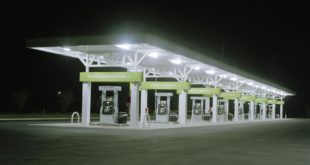
National Advanced Driving Simulator
From the June 2020 issue of Car and Driver.
At the University of Iowa’s National Advanced Driving Simulator (NADS) research center, more than 40 faculty, staff, and students use a 93-ton moon-lander-looking machine and a variety of vehicle cabs to study the way people drive. This test rig—called NADS-1—rides on seven belts (six on the x-axis, one on the y). All in, this costs about $ 80 million, but it allows researchers to perfect today’s automated driving tech in a safe, controllable way.
The team does some testing on public roads (they’re leading the charge to make rural-road-capable automated vehicle systems that can detect farm equipment), but that real-world work validates the 10,000 simulator drives logged in the NADS-1. On the day we visited, they were using a seventh-gen Toyota Camry to study how human drivers interact with Level 3 automation—in particular, how drivers respond when the system quits or tells them to take over.
Inside the rig, the Camry’s wheels have been removed and the wells stuffed with actuators to replicate body motions. Motors simulate brake- and accelerator-pedal and steering resistance and feedback. Sixteen video projectors display images of different environments on the inside walls of the NADS-1. This provides the driver with a 360-degree-horizontal, 40-degree-vertical field of view. The platform underneath the rig can reach up to 14 mph, and the dome can pitch 25 degrees, spin in nearly a complete circle, and accelerate at just over 0.60 g, laterally or longitudinally, allowing the NADS-1 to scale the movements of a real car into a space the size of two basketball courts.
Depending on the simulation, test drivers may sit inside the rig for hours. “The goal is to study human behavior, not vehicle performance,” says deputy director Omar Ahmad. The NADS team logs hundreds of data points, from eye movements to heart rates. Because the test scenario is repeatable, researchers are able to directly compare the behavior and responses of different drivers, which allows engineers to better refine the safety algorithms.
After a simulation where we had to take over from a self-driving system, we let loose with the NADS-1 on the (fake) open highway. The graphics are a bit dated, but the simulated dynamics are impeccable. Road vibration, wind noise, perspective, brake dive—it’s all remarkably close to real life.
Three’s Company
There are three simulators in the NADS facility: the NADS-1, NADS-2, and miniSim. The NADS-2 (left) has a fixed base and a limited field of view. It’s a more cost-effective way to run studies that don’t require the NADS-1’s motion capabilities, such as one on night-vision tech. And the miniSim is portable; it uses a 42-inch display and a partial vehicle cab.
This content is created and maintained by a third party, and imported onto this page to help users provide their email addresses. You may be able to find more information about this and similar content at piano.io




